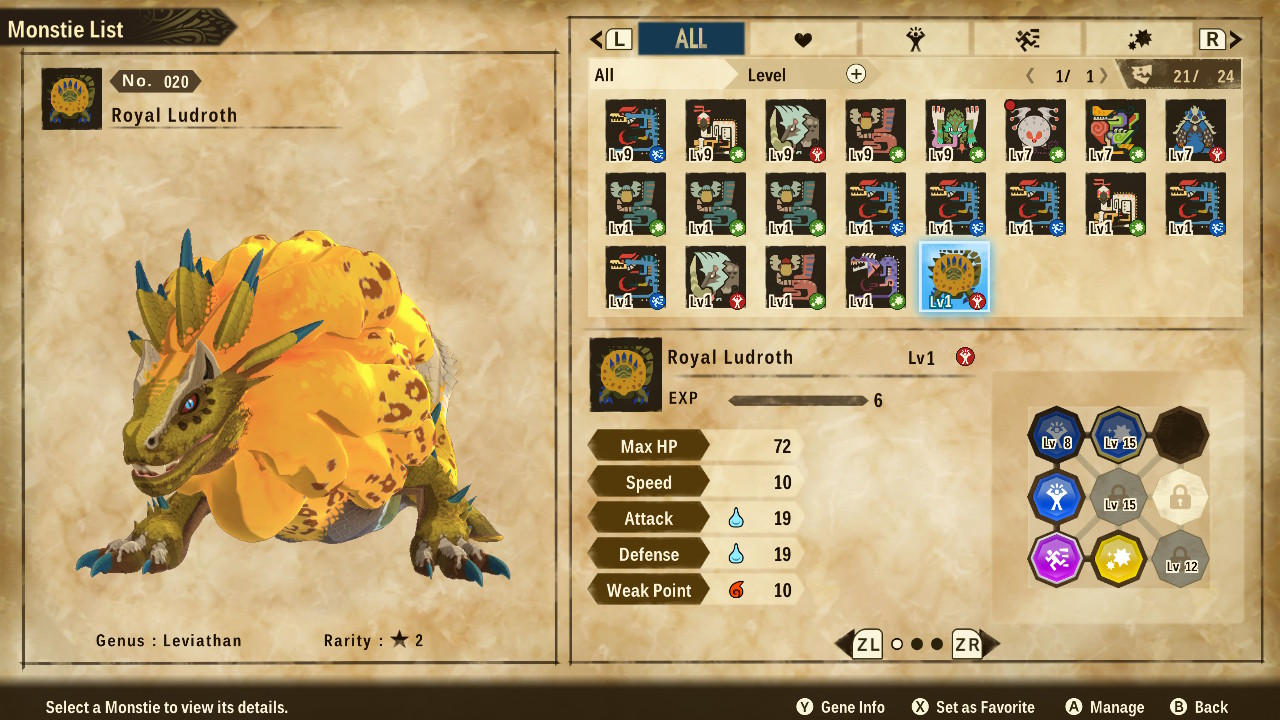Monster Hunter Stories 2 gene guide
The Rite of Channeling and how to get rainbow genes.

True to their name, Monster Hunter Stories 2 genes are the factors determining how your Monstie grows. They also give you nearly limitless customization options and a chance to build the ultimate Monstie—if you take the time to optimize gene builds.
Getting the right genes and the right number of slots depends on the type of monster egg you find. It requires some patience, though the Rite of Channeling feature lets you combine genes to make the Monstie of your dreams. This guide explains how genes work, how to get gene bingo, and how rainbow gene farming works.
Monster Hunter Stories 2 genes: An overview
Genes give Monsties skills and passive abilities, along with significant stat bonuses if you manage them correctly. Every Monstie hatches with a unique gene 3x3 gene board that includes some open slots, some locked behind levels, and a few you’ll need to unlock using stimulant items.
Monsties from rarer eggs have more open slots than common egg Monsties, and they tend to have better native stats. If you’re looking to build the best Monsties, it’s worth farming for rare eggs to make the most out of gene bingo.
Monster Hunter Stories 2 gene bingo
Genes come in several varieties, identifiable by their color and pattern. Colors denote element types, such as fire, electric, or ice, and patterns indicate Power, Speed, or Technical.
You can stack genes of the exact same type, such as two small Power boost genes, to increase the effect. However, the best bonuses come from lining up three gene elements or patterns in a row, which grants a hefty power boost to the elements or attack types included in the bingo. Lining genes up is easier using rare Monsties with more gene slots. Don’t release those less impressive Monsties just yet, though.
Monster Hunter Stories 2 Rite of Channeling
You’ll unlock the Rite of Channeling during the Alcala story quests, a feature that lets you transfer genes from one Monstie to another. The most important part of the Rite of Channeling is its open nature, since you can transfer gene skills to Monsties just as you can transfer stat boosts.
The biggest gaming news, reviews and hardware deals
Keep up to date with the most important stories and the best deals, as picked by the PC Gamer team.
For example, if you want a fire skill on your Royal Ludroth and have a corresponding gene to transfer, you can make it happen. The same applies to getting gene bingo lines and stacking genes.
However, the Monstie you pull genes out of will disappear forever, for obvious reasons, so make sure you’re fine with that before beginning the Rite.

Monster Hunter Stories 2 rainbow gene
The rainbow gene is highly desirable as it can stand in for a gene of any element or pattern. However, it’s also the most difficult to get. Your best chance of getting a rainbow gene on a Monstie is finding a rainbow egg.
This guide outlines how to do that, but it’s worth mentioning that even with luck charms and rare dens, there’s no reliable way to farm rainbow genes. Rainbow eggs will always hatch Monsties with better stats, but during one test phase, I went through several rainbow eggs without getting a single rainbow gene.
If you do want to farm rainbow genes, offer luck charms at the Prayer Pot, pick an area where your chosen Monstie might appear, and search for rare dens. If the process doesn’t work, travel to the nearest Catavan station and change the time of day to re-roll dens and monster spawns.
Just getting one could take you a while, though outside the fun of maximizing your Monstie’s stats, you won’t actually need substantial buffs until the post-game content.

